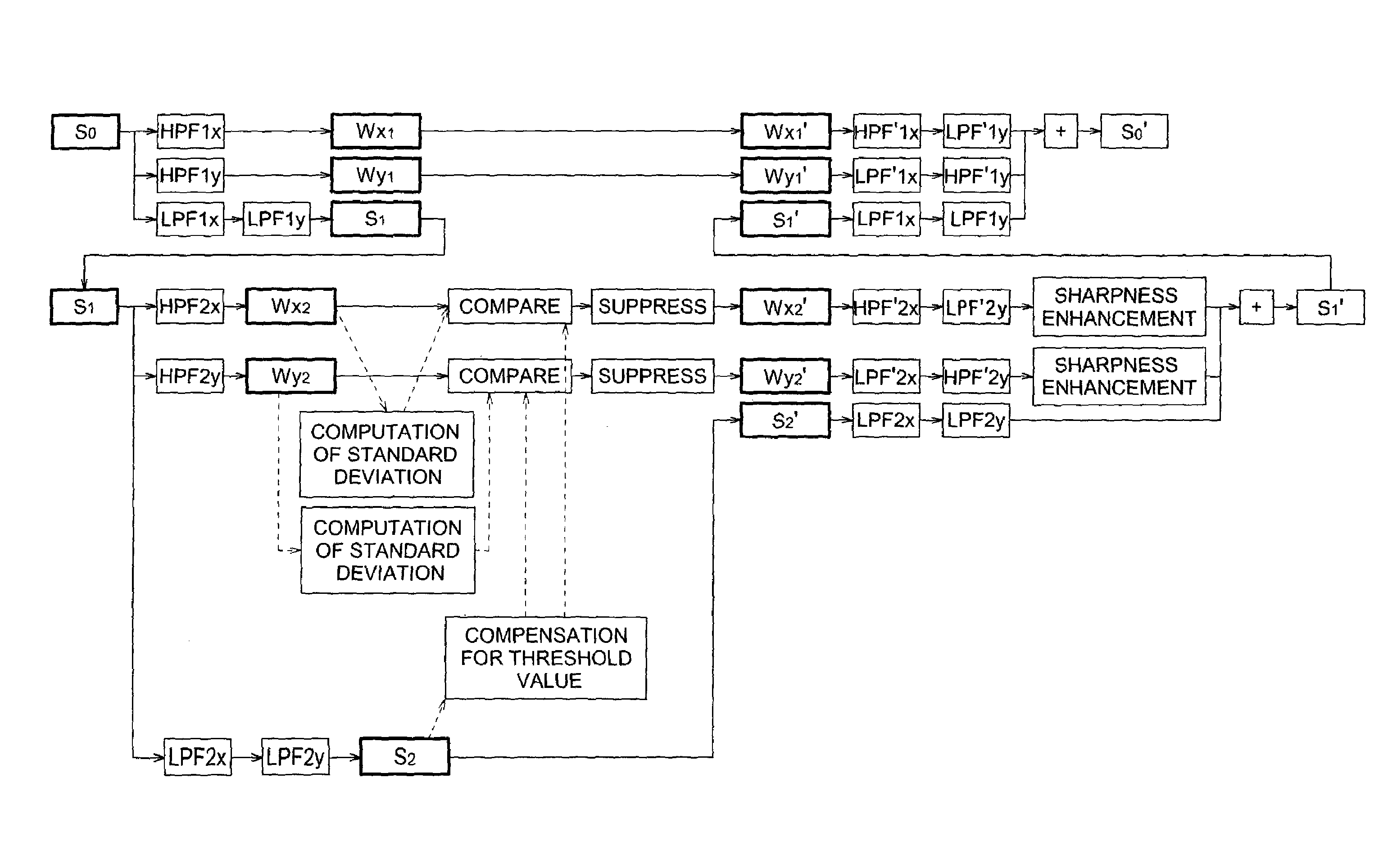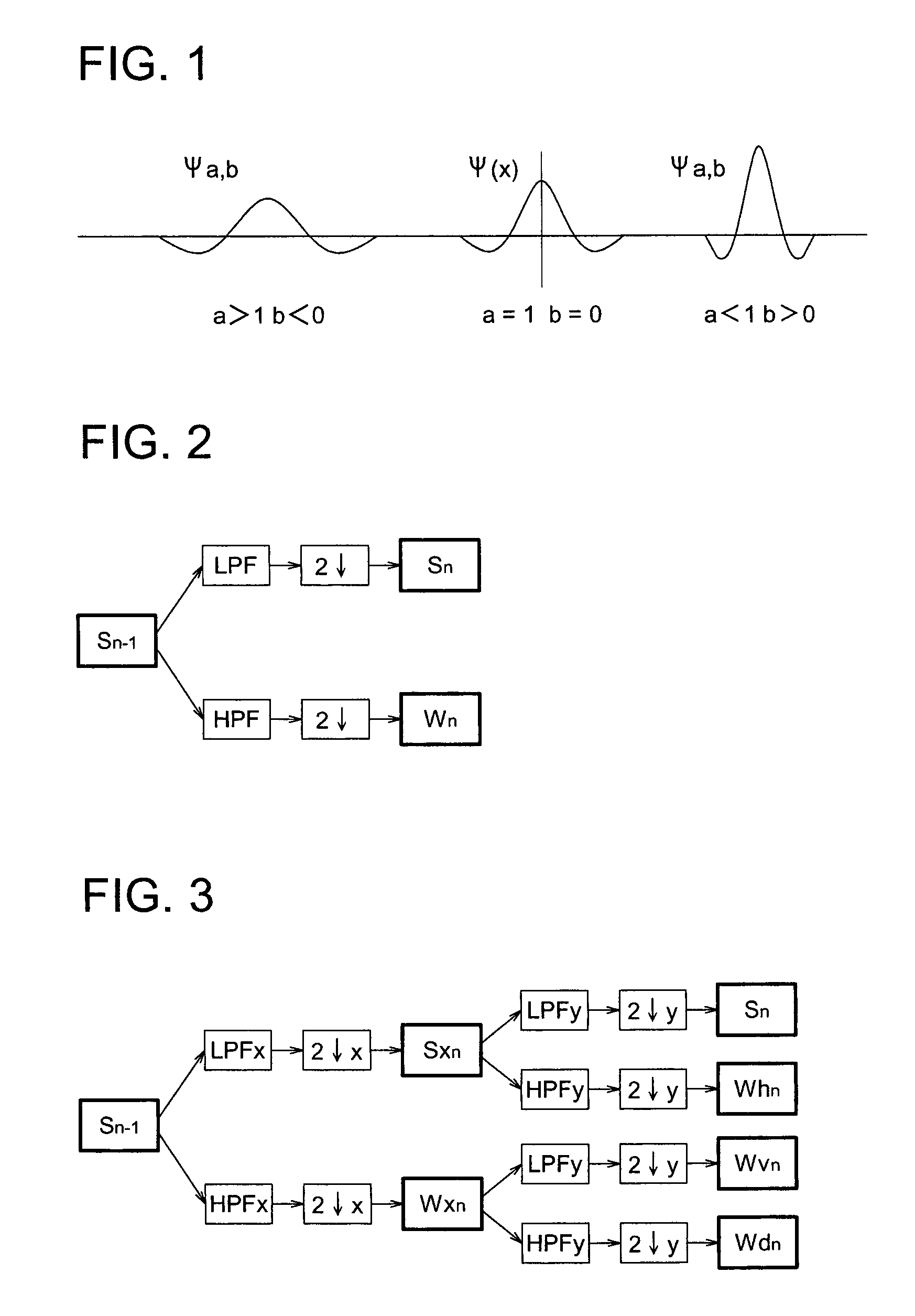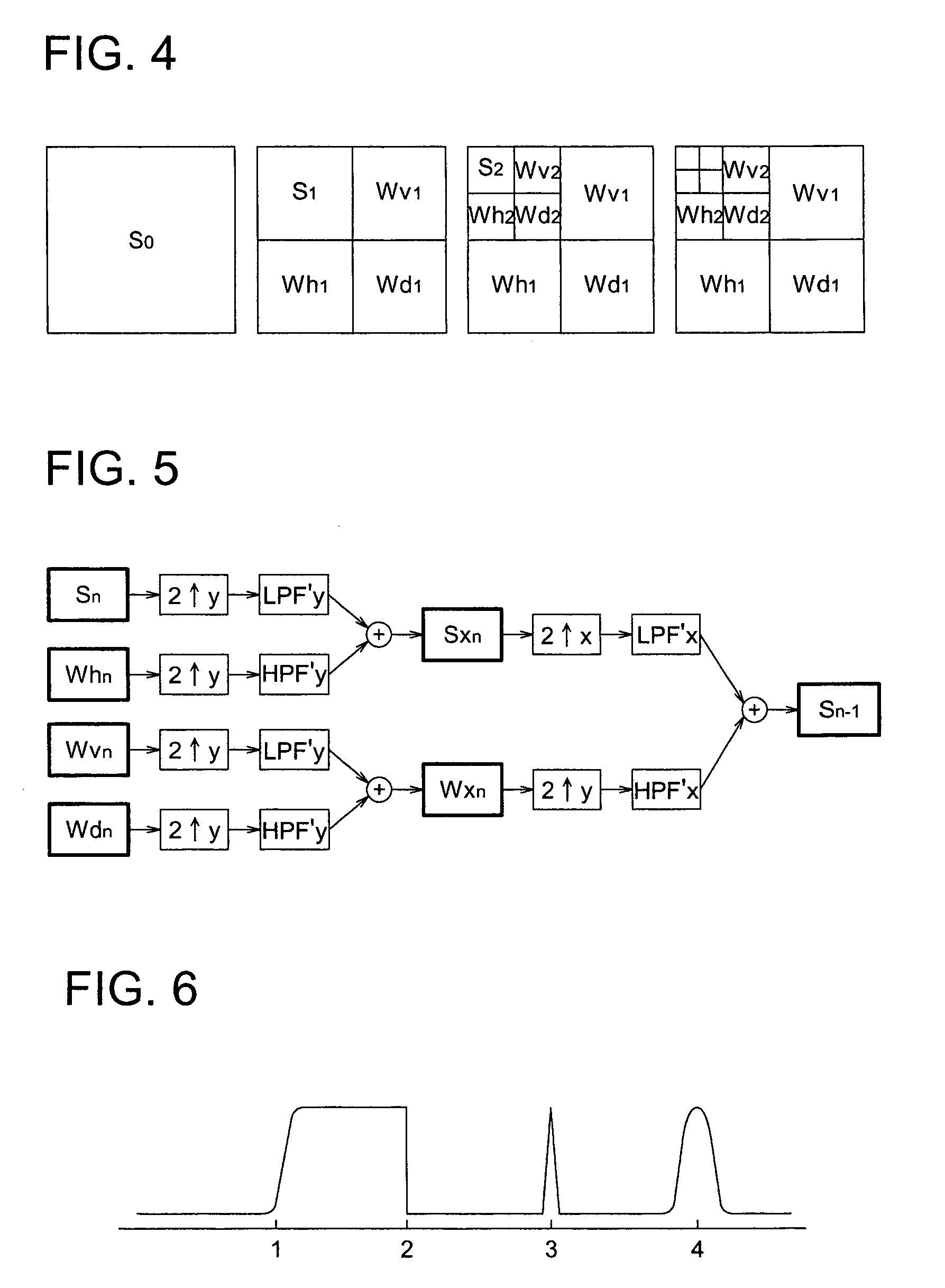[0061]To overcome the abovementioned drawbacks in conventional methods and apparatus, it is an object of the present invention to provide an image processing method, an image processing apparatus, an image processing program and an image recording apparatus characterized by reduced computation loads and capable of suppressing the mottled granular noise contained in color image signals and enhancing the sharpness of the image, wherein shadow on the bridge of the
nose or around the eyes is maintained, without noise similar to color misregistration and a smooth expressionless face wearing makeup being produced, and without false color contour appearing close to the edge or false color spot visible on the flat portion.
[0605]The image-processing method, the image-processing apparatus, the image-processing program and the image-recording apparatus, according to the first invention of the present invention, can be attained by the invention described in anyone of items 1, 51, 101 and 151. As the result of studies made by the present inventors, it has been revealed that the level, where a greatest amount of granular noise on the image is observed, differs according to the type of an input image. Accordingly, for a given level according to the present invention, it is important to select the level where a greatest amount of granular noise on the image is observed. It is preferable to determine it in conformity to the type of the input image (DSC resolution, ISO sensitivity of
silver halide film,
scanner resolution, etc.). For example, when the silver
halide film having a size of 135 mm on the order of ISO 200 through 400 is scanned at a resolution of 40 through 70 pixels / mm, it is preferred to adopt P=2. In the case of a silver
halide film, a given level P can be determined, for example, through automatic reading of ISO sensitivity from a
latent image barcode. In the case of DSC, it can be determined by referring to the manufacturer's name, model name and various types of information related to
image resolution contained in the existing tag information or the like specified in various types of general-purpose image format represented by
JPEG, TIFF and Exif. It can also be determined by manual inputting of an operator. However, the present invention is not restricted to any one of these methods. The amount of suppression of
signal intensity is preferred to be about ⅔ or less. It is more preferred to be ½ or less. Without being constant, the amount of suppression can vary in response to the relationship between
signal intensity and specific condition. The present invention provides a means of image processing that is capable of suppressing the mottled granular noise contained in color image signals, wherein shadow on the bridge of the
nose or around the eyes is maintained, without noise similar to color misregistration and a smooth expressionless face wearing makeup being produced, and without false color contour appearing close to the edge or false color spot visible on the flat portion.
[0626]The image-processing method, the image-processing apparatus, the image-processing program and the image-recording apparatus, according to the twenty-second invention, can be attained by the invention described in anyone of items 22, 72, 122 and 172. As a result of studies made by the present inventors, it has been shown that approximately *1.2 through *1.7 is preferable as the level of increase. The embodiment of the twenty-second invention allows sharpness to be enhanced without the granular noise being deteriorated.
[0627]The image-processing method, the image-processing apparatus, the image-processing program and the image-recording apparatus, according to the twenty-third invention, can be attained by the invention described in anyone of items 23, 73, 123 and 173. If an original image has a big color misalignment, misalignment cannot be corrected by mere suppression of luminance
high frequency band components in same cases. As a result of studies made by the present inventors, it has been shown that color misalignment can be eliminated by suppression of the
high frequency band components of
chrominance signals. To extract the
high frequency band components of chrominance signals, it is possible to use the above-mentioned known methods of high-pass filter,
orthogonal wavelet and
biorthogonal wavelet. The most preferred method for the present invention is to apply Dyadic
Wavelet transform to luminance signals to generate the high
frequency band components of chrominance signals, and to apply suppression after that.
[0628]The image-processing method, the image-processing apparatus, the image-processing program and the image-recording apparatus, according to the 24th invention, can be attained by the invention described in anyone of items 24, 74, 124 and 174. In a specific subject such as the human face,
skin or blue
sky, granular noise is conspicuous. This requires an increase in the amount of suppression of luminance high
frequency band components wherever possible. This problem is solved by an embodiment of the present invention in such a way that, when colors of the luminance high
frequency band components represent the characteristics of specific areas of
human skin and
sky color, the specific condition for suppressing the luminance high frequency band components of the pixel at the corresponding position is changed, thereby eliminating a greater amount of granular noise. The luminance
low frequency band components can be obtained by using the known method, but the method of using the Dyadic
Wavelet transform is preferred in the present invention.
[0633]The image-processing method, the image-processing apparatus, the image-processing program and the image-recording apparatus, according to the 50th invention, can be attained by the invention described in anyone of items 50, 100, 150 and 200. Some image viewers have a preference for a half-tone photographic image. To meet this preference, the method of adding week noise to the
image signal is used in some cases. The present inventors provides the method of getting a half-tone photographic image without deteriorating the granular noise, by adding weak noise to the processed
image signal.
 Login to View More
Login to View More  Login to View More
Login to View More 


